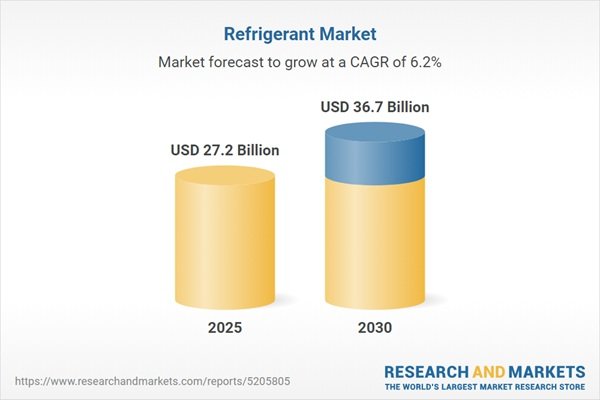Refrigerants market to reach $36.7 billion by 2030, driven by AC demand and natural alternatives
The global refrigerants market is expected to grow from $27.2 billion in 2025 to $36.7 billion by 2030, according to a new report from ResearchAndMarkets.com. This represents a compound annual growth rate (CAGR) of 6.2%, driven by rising demand for refrigeration and air conditioning (AC) systems across residential, commercial, industrial, automotive and electric vehicle (EV) sectors.
The growth is attributed to increasing global temperatures, urbanization, and the expansion of the middle class, especially in developing regions. Additional momentum comes from the adoption of natural refrigerants such as CO2, ammonia and hydrocarbons, as well as modernization efforts in cold chains serving the food and pharmaceutical industries.
However, the report highlights several challenges, including high costs of retrofitting and replacing systems, strict regulatory compliance, and the safety and toxicity concerns related to certain refrigerants. Regulatory frameworks such as the Montreal Protocol, Kigali Amendment and F-Gas Regulation are shaping market dynamics and pushing a shift toward low-global warming potential (GWP) refrigerants.
The study segments the market by refrigerant type—synthetic (including hydrofluorocarbons and hydrofluoroolefins) and natural—as well as by application, including various types of AC systems, refrigeration systems, chillers, and mobile AC. The analysis also covers regional trends across North America, Europe, Asia-Pacific, South America, and the Middle East and Africa.
The report includes competitive analysis, market share data, and profiles of key industry players such as Daikin Industries Ltd., Linde plc, AGC Inc., The Chemours Co., Honeywell International Inc., Orbia, and Arkema. It also discusses trends in ESG performance, patent activity, and the impact of emerging technologies, including AI and refrigerant recycling.
The 213-page report provides detailed market forecasts, with historical data for 2024, estimates for 2025, and projections through 2030.
